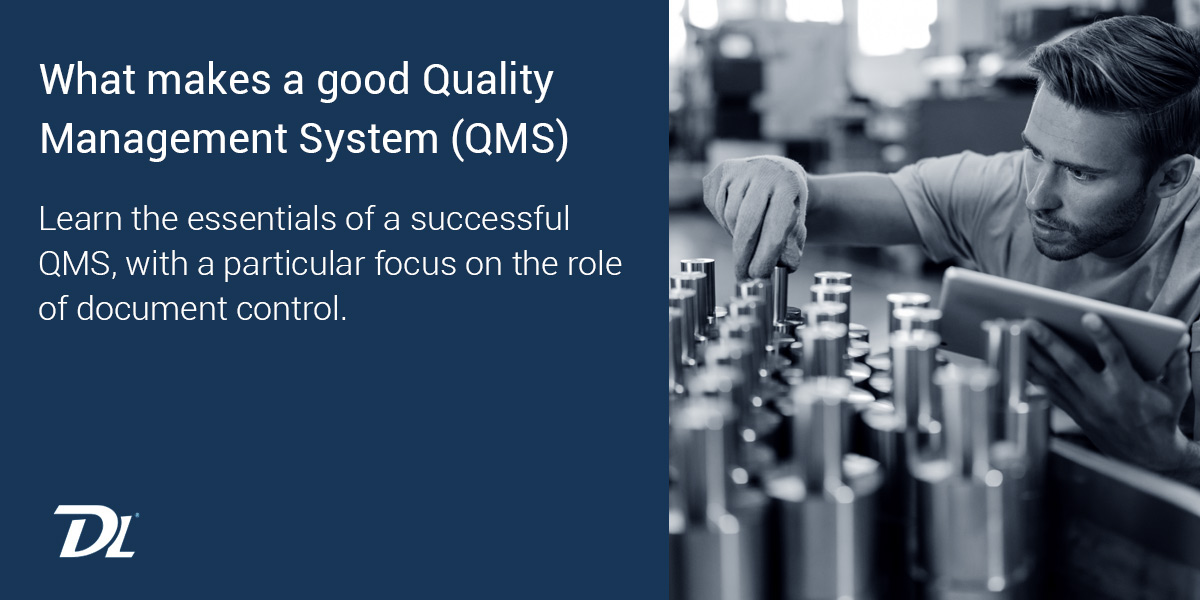A Quality Management System (QMS) is paramount for ensuring that organizations meet the highest standards of efficiency and customer satisfaction. It provides a structured framework that helps organizations meet customer expectations and regulatory requirements while aiming for continuous improvement. But what exactly is a QMS and what makes it effective? This post dives into the essentials of a successful QMS, with a particular focus on the role of a document control system.
What is quality management?
Quality management is the practice of overseeing all activities and tasks needed to maintain a desired level of excellence. This includes the determination of a quality policy, creating and implementing quality planning and assurance, and quality control and quality improvement. It is focused on ensuring products and services are delivered to the highest standards and meet customer expectations.
What is a Quality Management System (QMS)?
A Quality Management System (QMS) is a formalized system that documents processes, procedures, and responsibilities for achieving quality policies and objectives. It helps coordinate and direct an organization’s activities to meet customer and regulatory requirements and improve its effectiveness and efficiency on a continuous basis. A QMS is the blueprint for quality management, guiding companies in producing goods and services that meet a high standard of quality.
What makes a good Quality Management System (QMS)?
An effective QMS integrates leadership commitment, customer satisfaction, regulatory compliance, and a process-oriented approach to drive continual improvement and make informed decisions based on data. It ensures quality is at the forefront of an organization’s culture and operations, leading to enhanced performance and product excellence.
Leadership engagement: Effective quality management starts with committed leadership. A QMS thrives when leaders actively promote a quality-driven culture, setting a clear vision for quality and aligning it with the organization’s goals.
Customer and compliance focus: The goal of a QMS is to meet and exceed customer expectations while adhering to regulatory standards. It requires a thorough comprehension of customer needs, infusing this understanding into the quality process to deliver competitive products or services that are also fully compliant.
Process approach: Viewing an organization as a series of interlinked processes allows for more systematic management and optimization of performance, ensuring quality is maintained throughout all operations.
Continuous improvement: A hallmark of a QMS is its drive for perpetual improvement, seeking ways to enhance processes and adapt to new challenges efficiently.
Evidence-based decision making: Decisions within a QMS should stem from careful analysis of data, ensuring that resources are allocated effectively to improve quality and operational performance.
The role of document control in a QMS
Integral to a QMS is document control, which ensures that all relevant documentation is accurate, current, and accessible. Effective document control is necessary for maintaining compliance, facilitating communication, and preventing discrepancies in quality standards.
Leveraging document control software
In the framework of a QMS, document control software is key to streamlining processes, from automated document workflows to meticulous version control. It ensures secure access and comprehensive audit trails, which are essential for maintaining the rigorous standards of QMS compliance.
Automated Workflow: document control software automates the routing, review, and approval of documents, reducing the time and effort involved in manual processes.
Version Control: The software manages document versions meticulously, ensuring that everyone has access to the most current document and understands its revision history.
Access Control: Document control software provides secure access to documents, protecting sensitive information and ensuring that only authorized personnel can view or modify documents.
Audit Readiness: With comprehensive tracking of document changes, access, and approvals, organizations can readily demonstrate compliance during audits.
Why is quality management important?
A robust QMS, aided by effective document control, is indispensable for any organization aiming for quality excellence. It lays the foundation for meeting customer expectations, adhering to regulatory standards, and achieving sustainable growth. Understanding what a QMS is and implementing its core components with a focus on continuous improvement is the first step toward fostering a culture of quality that propels an organization toward success.




